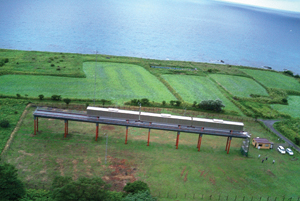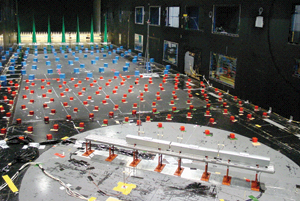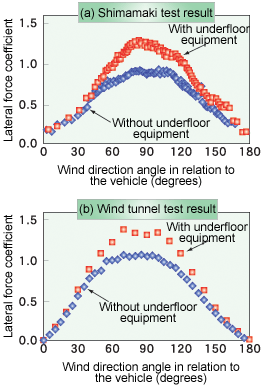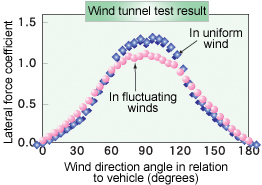| 4. Evaluation of the Aerodynamic Forces Acting on a Vehicle in Fluctuating Winds | |||||||
|
To evaluate aerodynamic forces acting on a vehicle under more actual conditions, a mock-up viaduct and mock-up vehicles (Fig.1) were set up in Shimamaki, Hokkaido (an area known for strong winds) and the aerodynamic forces acting on these vehicles were measured. The characteristics of natural wind in the area were also investigated, and fluctuating winds with similar characteristics were then generated in the Maibara wind tunnel (Fig.2) to measure aerodynamic forces acting on a 1/40-scale vehicle mock-up. As a result, the characteristics of the wind direction angle of the aerodynamic force coefficient obtained from the Shimamaki measurements were closely reproduced in the artificial wind tunnel (Fig.3). The results of the wind tunnel test and the mock-up test in Shimamaki showed that, when wind direction is perpendicular to a vehicle, the lateral force coefficient that greatly affects vehicle overturning is smaller in fluctuating winds than in uniform flow (Fig.4). Calculation of the wind velocity limit on vehicle overturning in relation to the characteristics of the wind direction angle shown in Fig.4, when running speed of vehicle is considered, suggests that the wind velocity limit on vehicle overturning is slightly higher in fluctuating winds within the normal velocity range of conventional lines. This study was sponsored by the Ministry of Land, Infrastructure and Transport.
| |||||||



